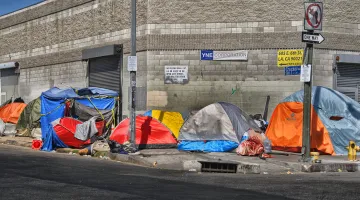A nationally recognized leader in health care program evaluations
Led by Associate Center Director Nadereh Pourat, PhD, the HEER Program is housed at the UCLA Center for Health Policy Research (CHPR). The program offers deep research and evaluation expertise and has a long and distinguished track record in conducting analysis of a broad range of efforts nationally and in California.
The Health Economics and Evaluation Research (HEER) program examines the impact of federal programs, statewide demonstrations, local initiatives, environmental disasters, and state and legislative policies. The HEER program has examined the impact of policies and programs on health insurance coverage, how health care is delivered, whether population health has been impacted, and whether cost savings are achieved. Evaluations highlight the challenges and opportunities posed and offer recommendations to promote effectiveness and sustainability of program and policies.
The HEER Program evaluations and studies provide critical information to policymakers and programs to improve public’s health.
Evaluation Studies
The HEER Program specializes in the evaluation of complex, large-scale interventions, including major California demonstration programs, such as Whole Person Care and PRIME.
Forecasting and Simulation Studies
HEER Program researchers have significant experience creating predictive models that help policymakers, advocates, program experts, public health officials, and others plan for change.
Economic Analysis
HEER Program staff examine utilization, costs, and cost-effectiveness of personal and public health interventions for a broad range of public and private organizations, as well as government initiatives.
The HEER Program has partnered with federal, state, and local governmental organizations to evaluate programs, initiatives, and demonstrations, and predict the outcomes of proposed policies. Our reports have been instrumental in subsequent changes in health care policy and care delivery to improve population health and reduce costs.
Nadereh Pourat, PhDDirector, Health Economics and Evaluation Research Program












